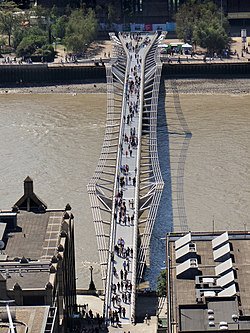
A technician or mechanic for aircraft and avionics equipment is a difficult job. The aircraft and avionics industry creates and supports nearly 270,000 jobs and generates $43.1 billion in economic activity annually. This occupation requires a good knowledge of aviation systems. They also need to be proficient in using tools and equipment. Avionics technicians also may perform routine and FAA-required inspections on aircraft.
There are many types of jobs for technicians or mechanics in the aviation and avionics industry. The United States has the largest workforce of such professionals. More specifically, the scheduled air transportation industry employs more than half of all aircraft mechanics. Other employers include federal government agencies and aerospace product and parts manufacturing companies. Additionally, non-scheduled aviation companies employ a small proportion of these mechanics.

The training you receive in the field of aircraft mechanics or technicians and avionics device technician will prepare your for a fulfilling career. After completing your program, you will be eligible to sit for the FAA certification exam. These certifications can make you eligible for many jobs in the aviation industry including major airlines, manufacturers, and structural repair facilities. This career path can pay a good salary so it is worth considering.
Avionics technicians can also earn certifications in avionics equipment and maintain radio and autopilot flying systems. A certification can be obtained by Avionics technicians and is also possible to become an A&P mechanic. Avionics technicians are highly skilled and valuable, and there is expected to be a growth of 5% over the next decade.
This job requires high levels of concentration, attention, and physical and psychological strength. Technicians must work quickly and maintain safety standards. Technicians can lift objects as heavy as 70 pounds and may have to work in difficult and awkward places. Some industries have unwritten standards that can be ignored by engineering documents. You need to be protected from such factors. An aircraft can be seriously damaged if it's operated under extreme pressure.

Avionics technicians are experts in the installation, maintenance, and repair of electronic instruments on aircraft. They are also responsible for maintaining radio communication devices, radar systems, and navigation aids. As digital technology is more widely used, so does time spent maintaining computer systems. Having a license to work with most avionics requires the mechanic to have an Airframe rating. Additionally, additional licenses may be required to work on aircraft.
Maintenance and inspections of aircraft are also performed by mechanics. A mechanic's main responsibility is to perform scheduled maintenance and repair. Preventative maintenance is a specialty of some mechanics. This ensures that planes remain safe to fly. They inspect plane engines, landing gears, instruments, pressurized section, and other accessories. Maintenance records are also kept by mechanics. Technicians can also troubleshoot or repair electrical systems in aircraft.
FAQ
What is a typical day in life of an engineer?
Engineers spend a lot of time on projects. These projects could include the development of new products or improvements to existing ones.
They may work on research projects that aim to improve the world around us.
They could also be involved creating new technologies such computers, mobile phones and planes, rockets, or other devices.
To complete these tasks, engineers have to use their creativity and imagination. Engineers need to be able to think out of the box and create innovative solutions to problems.
They will be expected to brainstorm ideas and create concepts. They will also need to test their ideas using various tools, such as laser cutters, CNC machine, 3D printers, and computer-aided designing software.
Engineers must communicate effectively with others to express their ideas. They must write reports and presentations to share their findings with colleagues and clients.
Finally, they must manage their time effectively to achieve maximum results in the shortest amount of time.
No matter what kind of engineering you choose you must be creative, imaginative and organized.
Elon Musk, what kind of engineer are you?
He is an inventor who likes to think outside the box.
He is also a risktaker.
He's not afraid to experiment with new ideas and is open to taking risks.
Elon Musk, a great example of someone who thinks and acts differently to others, is a great example. He doesn’t follow the advice of others. Instead, he tries out his own ideas and then decides whether they worked or not. He changes his ideas if they don’t work and then he tries again until he has something that works. This way, he gets better at solving problems and developing innovative ideas.
What is the Most Hardest Engineering Major?
Computer science is the most challenging engineering field because you have learn everything from scratch. You must also know how to think creatively.
Programming languages such as C++, JavaScript and PHP will be required to comprehend.
Understanding how computers work is another important skill. You will need knowledge about hardware, software architecture and operating systems.
Computer Science is the best option to train as an engineer.
Do I need a degree to become an engineer?
A bachelor's degree is not required to become an engineer. Many employers prefer applicants who have degrees. Online classes are also available if you don’t have a degree.
Statistics
- Typically required education: Bachelor's degree in aeronautical engineering Job growth outlook through 2030: 8% Aerospace engineers specialize in designing spacecraft, aircraft, satellites, and missiles. (snhu.edu)
- Job growth outlook through 2030: 9% (snhu.edu)
External Links
How To
How to read engineering drawings
Engineering drawings can be used to describe an object visually. You can find many elements within them, such as dimensions, symbols or text. Engineering drawings have been around from ancient times. In Egypt 3000 BC, the first drawing was created. They are used by engineers to design things like bridges, buildings and machines.
Engineers use engineering diagrams to show what something looks like. It aids others in understanding what you're talking. Engineers draw things out using symbols and numbers to show measurements. This makes it easier for people who don't know anything about engineering.
There are 2D and 3D types of engineering drawings.
2D drawings represent flat representations of three-dimensional objects. These include plans as well as sections, elevations, and axonometric projections.
3D drawings show real-life objects from multiple angles. They are most often created with computer software. SketchUp, for example, allows you to view a bridge from the sky. Then, select "View" then choose "Top view." Then rotate your view until all of it is displayed from above.
2D drawings should be viewed in the entirety. Focus on the whole picture, not just one section. You should also pay attention to the important things in the top right corner.